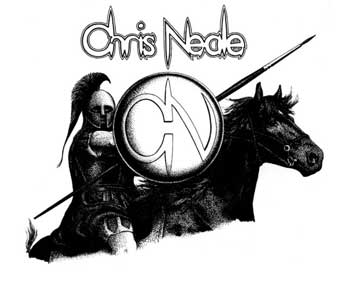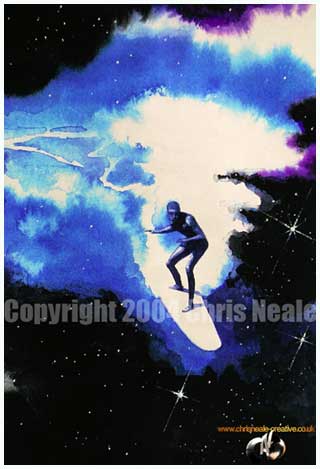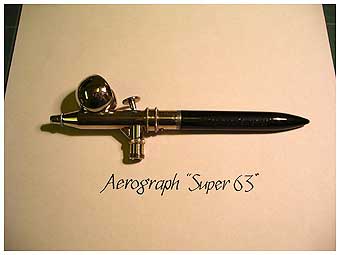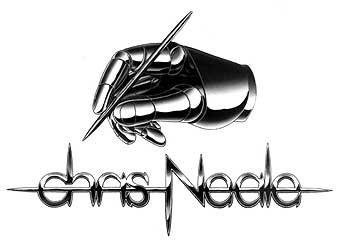
|
Technically speaking, most of the work that I have produced would be classed as... "Illustration". Illustrators are some of the most highly skilled crafts - men and women in the graphics industry... yet, the least well paid... I make dental models for a living! It really rankles, that someone can cut a cow in half... or make up an old bed, call it "art" and get stupid money for their "efforts". Traditional illustration, is a dying trade... the CGI banner above is more accurate and a lot quicker to produce, even allowing for the time to build the model. Something people forget... an illustrator also has to be a graphic designer! Often, the illustration has to reflect the subject matter. Take a look at the outstanding work of Roger Dean, whose fantastic album covers for rock band "Yes"... inspired so many of us. |
|
Logo No 1 (above): Pen and ink, created by making thousands of tiny dots with a draughtsman's "Rotring" pen. To airbrush... or not to airbrush? As soon as you decide to use an airbrush, the purists will relegate your work of art... to that of an illustration. So, my tribute painting, "Challenger's Glory" is an illustration. Fine. People still bought it, and better still, took the time to write to me thanking me for the pleasure they received from owning it... which means a lot more to me than "stupid money". (How can you be a wealthy artist... what about that tradition then, eh, eh)? So, why use an airbrush? Basically, if you want to produce the style of work I'm interested in... you cannot achieve the subtle tone graduations required for lens flares and planetary atmospheres without one. If you look at my "First attempt" painting in the Art Gallery... you will get my point. A paintbrush has its limitations. The only other way you can achieve this effect is by using watercolours and letting the paint "bleed" into a wet area of the paper... a technique I use for my portraiture work... (using diluted acrylic ink, which won't fade). The "Surfer" below, was produced entirely using this method. The star "lens flares" were simply scratched into the paper using a scalpel and metal straight edge!  Surfer: No airbrush used here... just lots of water! ______________________________________________ Having decided that you're going to use an airbrush, problems abound! Paint, especially acrylic will clog the precision parts... everything has to be diluted and put through a tea strainer. You need a good compressor with a reservoir to maintain constant air pressure... or it will spatter your masterpiece with paint... as will one spec of dust in there! Worst of all... you're going to spray paint which will go everywhere... including up your nose! This means masking. You put plastic film over your work and using a scalpel, cut out the bit you actually want the paint to reach... without cutting the paper underneath. Not easy, and very time consuming. Of course, as with any trade there are many tricks that you pick up along the way to achieve the desired effect. An effect that can be so delicate that one little spec of dust (that decides to settle right on that freshly painted area)... can completely ruin! Nowadays... you can do all of this with your virtual airbrush tool in "Photoshop"! There's no dust, no paint, no air... digital is here to stay. But maybe all of these factors give more "life" to a traditional illustration? |
 My 20 - year old DeVilbis Aerograph. This is a "dual action" airbrush: Press down to release air... pull back to release paint.  The action allows very fine control over the paint flow and air pressure release. The paint is gravity fed from the bowl on top  Logo No:2 This was the first piece I created with an airbrush. The outline was drawn in ink with a "rotring" pen, then masked and airbrushed. (Illustration Gallery - next page)  The Hill: Piece for a full-page colour ad in the "Ideal Homes" magazine. This had a blemish caused by a spec of dust landing in the wrong place! The deadline didn't allow for repairs and it remained. On the computer... I just painted it out in seconds! |
NEXT PAGE: THE ILLUSTRATION GALLERY ...COMMERCIAL ART AND ILLUSTRATION.


